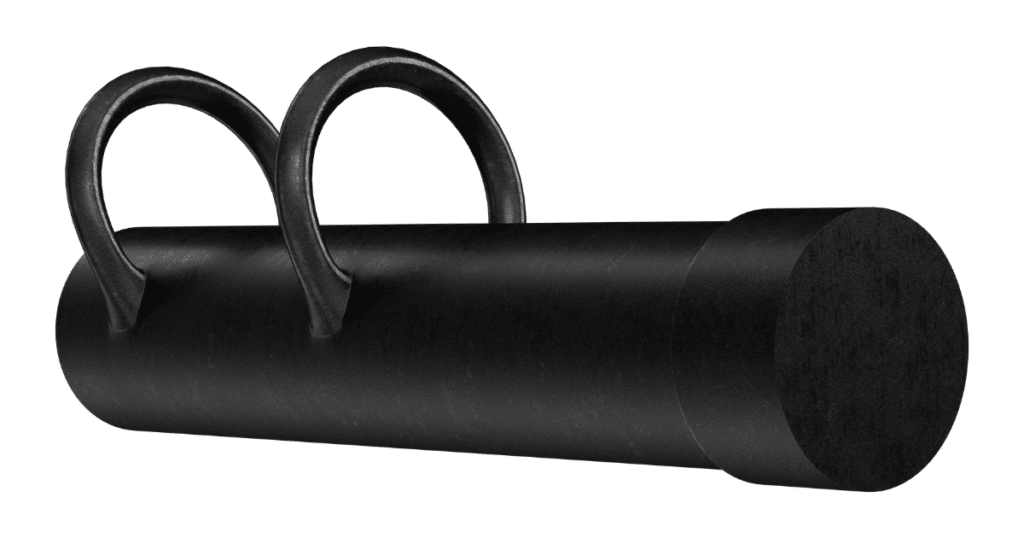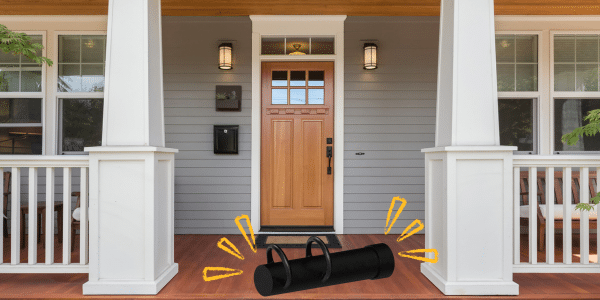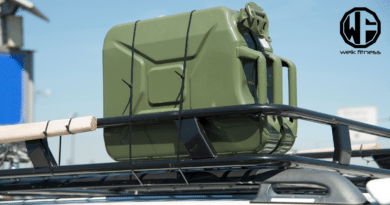The Art of Door Breaching: Techniques, Tools, & Safety Measures
Imagine you’re facing a door that just won’t give. It’s standing between you and your goal—maybe it’s part of your job in law enforcement, or perhaps it’s an emergency where time is crucial. But door breaching is the solution to the problem.
The challenge isn’t simply getting past the barrier; it’s doing so quickly and safely without compromising your mission or welfare. That, my friends, is the essence of door breaching—a critical skill for those moments when doors become obstacles rather than gateways.
Did you know? In high-stakes operations like SWAT interventions or firefighting rescue scenarios, the ability to breach a door can mean the difference between life and death. Our article dives deeper into this vital world, offering insights on various breaching techniques, from manual to explosive methods, shining a light on tools that can make all the difference in these tense situations.
We’ll also guide you through safety measures essential for successful and hazard-free door breaching operations. Ready to crack open the world of tactical entry? Let’s learn how to knock down barriers safely and effectively!
Disclaimer: This article is not promoting the use of door breaching for illegal purposes—it is meant to be an informative piece that provides details on the topic along with things you can legally own if you wish to have them at your house if you needed to use it in an emergency.
Key Takeaways
- Door breaching is an essential skill for law enforcement, military, and emergency services to gain access through barriers quickly and safely.
- There are various door-breaching techniques, which include manual methods like using battering rams and crowbars; mechanical approaches such as cutting torches; hydraulic tools like spreaders and cutters; ballistic options with breaching rounds; explosive charges for immediate entry; and thermal methods involving intense heat applications.
- Key tools in door breaching include battering rams, breaching poles, crowbars, sledges, cutting torches, and specialized ammunition known as breaching rounds.
- Protective gear such as helmets, eye protection, ballistic vests, gloves, and proper training ensure the safety of personnel during door-breaching operations.
- Before employing any door-breaching technique, risk assessment is critical to minimize dangers and assess potential hazards, including the structural integrity of doors.
Table of contents
Techniques for Breaching Doors
Techniques for breaching doors include manual methods such as using a battering ram or crowbar, mechanical methods like cutting torches or breaching poles, hydraulic methods using spreader-cutter tools, ballistic methods with breaching rounds, explosive methods with charges, or thermal techniques.
Related Article: How to Harden Your Home & Protect Your Family from Intruders
Each technique has its own advantages and considerations based on the specific circumstances of the breach.
Manual entry methods
Manual methods in door breaching require no special equipment or technology. They rely on physical strength and technique to gain entry.
- Using the Battering Ram: Grasp a heavy-duty ram with both hands, maintain a stable stance, and strike the area near the door handle or lock firmly. Repeat until the door gives way.
- Crowbars and Halligans: Insert these tools into the space between the door and frame. With a firm grip, apply leverage by pushing or pulling to force the latch or bolt out of its socket.
- The Art of Kicking: Target the point where the lock meets the doorframe and deliver a strong kick using your heel. This is often called a “mule kick.” Aim for multiple blows if necessary to weaken or break through.
- Utilizing Sledgehammers: Swing a sledgehammer with controlled power at hinges or locks. It’s vital to hit accurately to avoid glancing off and injuring yourself or your teammates.
- Pry Bars for Latches and Bolts: Work a pry bar under latches or around bolted areas. Use seesaw motion for maximum effect—this can bend metal parts, allowing grasping and pulling them free.
- Bolt Cutters in Action: Apply this tool to cut through padlocks or chain links securing doors. Ensure you have positioned the mouth of the cutters correctly before exerting pressure to snap through metal.
- Lock Picking Mastery: Use tension wrenches and picks to skillfully manipulate pin tumblers inside locks. This method offers silent entry but requires practice and fine motor skills. A good lock pick set is necessary.
- Breaching Through Hinges: Attack hinges directly if they are visible on an outward opening door. Strike sharply with hammers or use cutting tools when appropriate.
Mechanical door breaching methods
Mechanical methods of door breaching offer a physical approach to gaining entry. They rely on force and manual tools, allowing operators to break through barriers without relying on advanced technology.
- Using a Battering Ram: This classic tool is synonymous with forced entry; it’s a heavy-duty option that teams use to smash through door structures swiftly. A synchronized team effort maximizes the impact, often breaking the lock or hinges in one go.
- Operating Breaching Poles: Also known as Halligan bars, these instruments combine a claw, blade, and spike. The claw can be wedged into door frames to pry them open, while the spike can penetrate and create leverage points for twisting and prying.
- Utilizing Sledgehammers: These hefty hammers deliver kinetic energy directly to locks or hinges. Repeated strikes from this breaching tool can dislodge even well-reinforced doors.
- Applying Cutting Torches: Cutting torches melt through with intense heat when dealing with metal doors or barriers. This thermal method requires steady hands and protective gear but slices through steel quickly.
- Leveraging Crowbars: A simple yet versatile tool, crowbars give users the leverage needed to pop doors open. Inserting the flat end into door jams and applying pressure can bend metal components or force wooden doors out of their frames.
- Swinging Axes and Tomahawks: These sharp tools are effective against wooden doors. With precise swings focused on weak points like locks or hinges, they allow breachers to chop their way through obstacles.
Hydraulic door breaching tool methods
Hydraulic methods are a powerful way to breach doors, especially when dealing with reinforced entry points. These techniques use specialized tools to exert incredible forces, allowing operators to overcome even the toughest barriers.
- Hydraulic rescue tools, often used by firefighters and emergency personnel, also serve as efficient breaching devices.
- The hydraulic spreader can pry open doors by applying outward force on the door frame or hinges.
- A hydraulic cutter easily slices through bolts and locks, using high-pressure power to snip metal as if it were paper.
- Innovation in hydraulics has led to portable battering systems that can be mounted on a frame and used to push doors inward or pull them outward effectively.
- Training with these tools is critical; they can be dangerous without proper knowledge and technique.
- For tactical teams, such as military or police special operations, hydraulic methods provide a quieter entry option compared to explosive breaching.
- Users of hydraulic breaching must wear protective gear due to the potential for flying debris or the accidental release of high-pressure fluid.
- Safety measures include assessing structural integrity beforehand to avoid collapse upon forced entry.
- Communication is key during operation; team members must coordinate their movements and actions to maintain safety and efficiency around these powerful tools.
- These methods are adaptable and can be used on various types of doors, including those made of wood, metal, or reinforced concrete.
Tactical ballistic methods
Ballistic methods involve using firearms or specially designed breaching shotguns to breach doors. These methods are often used by military and law enforcement for quick, precise entry into secured spaces. Here are the key aspects of ballistic door breaching:
1. Breaching Shotguns: Utilizing purpose-built shotguns loaded with specialized ammunition such as breaching rounds, shotgun slugs, buckshot, or frangible rounds is a common ballistic method.
2. Precision and Control: Ballistic methods enable operators to deliver controlled force to breach locks, hinges, or other door components without causing excessive damage to the surrounding structure.
3. Flexibility in Use: Ballistic tools like breaching shotguns offer versatility in various scenarios where manual or mechanical methods may not be feasible or practical.
4. Safety Considerations: Proper training and knowledge of ammunition characteristics are crucial for ensuring personnel safety during ballistic door breaching operations.
Explosive door breaching methods
Explosive methods are used by military and law enforcement for breaching doors. These methods require meticulous planning and adherence to safety protocols to ensure the protection of personnel and minimize collateral damage. Consider the following explosive methods utilized in door breaching:
1. Shaped Charges: These are designed to direct the force of the explosion toward the targeted area, allowing for precise breaching with minimal risk of structural damage.
2. Detonation Cord (DetCord): This high-velocity cord is often used to create a linear explosive path along a door or obstacle, enabling controlled entry without causing widespread destruction.
3. Breaching Charges: Specifically crafted explosives that are strategically placed and detonated to swiftly breach through locked or barricaded doors.
4. Explosive Breaching Kits: Specialized equipment containing a variety of charges, detonators, and accessories tailored for specific breach scenarios, ensuring flexibility and efficiency in operations.
5. Safety Precautions: Before employing explosive methods, comprehensive risk assessments should be conducted, with attention given to potential hazards such as flying debris and overpressure effects on nearby structures.
6. Training and Certification: Personnel must undergo rigorous training in handling explosives and breaching procedures, reinforcing adherence to established safety measures and operational standards.
Thermal door breacher methods
Thermal methods are a strategic approach to door breaching, utilizing heat-based techniques to gain entry. These methods offer effective solutions in certain situations. Here’s a detailed look at how thermal methods can be utilized:
1. Thermal Lances: Using intense heat, these tools cut through metal doors with precision, making them ideal for breaching fortified entrances.
2. Thermal Imaging: This technology helps identify potential weak points in doors by detecting temperature variations, aiding breachers in planning their approach.
3. Exothermic Cutting Charges: These specialized charges generate extremely high temperatures to melt and cut through metal components of fortified doors swiftly and quietly.
4. Induction Heating Tools: Employing electromagnetic induction, these devices apply localized heat to weaken door mechanisms without causing structural damage.
5. Thermobaric Devices: These explosives create a high-temperature explosion that produces a concussive blast capable of breaching heavily reinforced doors.
6. Thermal Entry Saws: Equipped with high-powered cutting blades, these saws are engineered to effortlessly sever metal components within door structures.
Tools Used for Door Breaching By Special Operations
Various tools are utilized for door breaching, including battering rams, cutting torches, crowbars, and sledges. These tools aid in gaining entry efficiently and effectively during tactical operations.
1. Breaching rounds
Breaching rounds, also known as shotgun breaching rounds, are specialized cartridges designed for forcibly opening locked or barricaded doors. Law enforcement and military personnel commonly use these rounds to quickly gain entry in high-pressure situations.
Different types of breaching rounds include rubber slugs, bean bag projectiles, and frangible munitions that can effectively disable locks or hinges without causing harm to individuals on the other side of the door.
With their ability to deliver controlled force at close range, breaching rounds are essential tools for tactical operations requiring swift and safe access through secured entrances.
These versatile ammunition options are a crucial part of the broader spectrum of door-breaching techniques, providing a non-lethal yet highly effective means of gaining entry when traditional methods prove inadequate.
2. Battering rams
Battering rams, essential tools for door breaching, come in various forms and sizes. These heavy-duty tools are designed to deliver powerful impacts to doors, forcefully breaking through obstacles.
With their sturdy construction and strategic weight distribution, battering rams effectively transfer kinetic energy into the targeted entry point, making them indispensable for law enforcement agencies and military units during forced entries.

Adaptability is crucial; some modern iterations feature adjustable handles or attachments for versatility in different breach scenarios.
Used by both military and police forces, battering rams are a vital component of breaching kits, ensuring a swift entry when time is of the essence. Their ability to overcome reinforced doors makes them a crucial asset during tactical operations or emergency situations where rapid access is imperative.
3. Cutting torches
Cutting torches are essential tools for breaching doors, offering a reliable and precise method to gain entry. These powerful tools use a combination of oxygen and fuel to create a high-temperature flame that can cut through metal, allowing for quick access when other methods prove challenging.
Breaching teams often rely on cutting torches in tactical situations where speed and efficiency are paramount. The controlled application of the torch ensures minimal damage while swiftly overcoming obstacles.
When using cutting torches, safety measures such as proper training, protective gear, risk assessment, and communication protocols must be strictly followed. This helps mitigate potential hazards associated with using this specialized tool during door breaching operations.
4. Breaching poles
Breaching poles are essential tools used for forcible entry and tactical breaching. They provide leverage and control when breaching doors, making them indispensable for military, law enforcement, or emergency services personnel.
Breaching poles allow precise manipulation of the door while maintaining a safe distance from potential hazards. These tools can be instrumental in creating space to deploy other breaching methods or gaining access to secure areas with minimal risk.

When it comes to door breaching, mastering various techniques and utilizing the right tools is crucial for successful operations. Breaching poles provide an effective means of gaining entry by leveraging their unique design and functionality.
5. Crowbars
Crowbars, also known as pry bars or wrecking bars, are essential tools for door breaching. These versatile tools can efficiently apply force to pry open doors or break through barricades.
Crowbars come in various sizes and shapes, with curved ends that provide optimal leverage for forcing entry. Law enforcement, military, and emergency services often utilize crowbars to swiftly gain access during tactical operations.
The durability and simplicity of crowbars make them indispensable for breaching doors while ensuring safety measures are upheld.
When it comes to door breaching methods, the effectiveness of crowbars cannot be overstated. Their sturdy construction allows operators to exert significant force without compromising precision or control—making them a must-have tool in any breach kit.
6. Sledges
Sledges are powerful tools for breaching doors, capable of delivering forceful blows to break through barriers. These heavy-duty hammers can effectively smash locks and hinges, providing swift access when used by trained personnel.
Sledges are commonly employed in tactical breaching scenarios, offering a manual method that is reliable and versatile in various breach situations. With their robust construction and efficient design, sledges play a crucial role in successful door-breaching operations.

In addition to being an essential tool for door breaching, sledges also serve as reliable equipment for training purposes. Law enforcement agencies and military units utilize sledges to simulate real-world breach scenarios during training exercises, allowing personnel to develop the necessary skills for effective door entry techniques.
Legal Door Breaching Tools You Can Purchase and Own to Force Entry
If you want to have some of your own door-breaching tools, here are some links to products you can legally purchase:
- Blackhawk DE-SOB Dynent Special Operations Breacher
- Blackhawk Dynent Breaching Sledge
- Blackhawk Dynent Monoshock Ram
- Blackhawk Boltmaster
- Gerber Gear Ding-Dong Breaching Tool
- Estwing Breaching Ram Tool
- Ka-Bar USSF Bridge Breacher Tool
- Council Tool Forcible Entry
Safety Measures for Door Breaching
Proper training, protective gear, risk assessment, communication, and controlled detonation are essential safety measures for door breaching. Learn more about these crucial safety practices to ensure the safe and effective execution of door breaching techniques.
1. Proper training
Engage in proper training to master the art of door breaching, ensuring safety and proficiency. Familiarize yourself with various breaching methods and tools, including manual, mechanical, ballistic, hydraulic, explosive, and thermal options.
Understand that door breaching involves specific searching techniques and enforcing essential safety measures to protect personnel during the process.
Equip yourself with comprehensive training doors and tools designed for mastering door breach techniques. Prioritize risk assessment and communication strategies while engaging in controlled detonation practices.
2. Protective gear
Protective gear is crucial for ensuring safety during door breaching exercises. Properly fitted helmets, eye protection, and ballistic vests are essential to shield against potential fragments or ricochets resulting from explosive and ballistic methods of entry.
Additionally, gloves can safeguard hands during manual or hydraulic breaching procedures. When selecting protective gear, it’s important to consider the specific hazards posed by each breaching method in order to ensure comprehensive protection for the personnel involved.
While engaging in door breaching activities, self-defense and firearms enthusiasts must prioritize their safety by donning appropriate protective gear aligned with the risks associated with different breaching methods.
3. Risk assessment
Performing a thorough risk assessment is crucial before initiating any door breaching operation. Evaluate potential hazards and risks associated with the specific method of entry, tools used, and environmental factors.
Analyze the structural integrity of the door to anticipate its response to different breaching methods, ensuring that unexpected outcomes are minimized or prevented altogether. Keep in mind that proper communication among team members is essential during risk evaluation to coordinate efforts effectively and mitigate potential dangers.
Remember to prioritize safety by assessing the likelihood of collateral damage and bystander presence, adjusting tactics as necessary to minimize harm.

Conducting a risk assessment also involves considering the type of breaching tools utilized, their capabilities, limitations, and possible malfunctions inherent in their use. Ensure that personnel involved in the breach are properly trained and equipped with protective gear suitable for mitigating identified risks during door breaching operations.
4. Communication
During door breaching operations, effective communication is crucial for ensuring the safety and success of the mission. Clear and concise communication among team members helps coordinate movements, avoid friendly fire incidents, and swiftly respond to any unexpected developments.
Verbal cues and hand signals play a vital role in conveying information when breaching doors within confined spaces where verbal communication may be challenging due to noise levels or distance.

In addition to traditional verbal communication, employing modern radio systems equipped with earpieces allows team members to maintain continuous contact without alerting potential threats.
Proper training in communication protocols and procedures ensures that all team members understand the signals and messages being conveyed during high-stress situations.
Moreover, integrating non-verbal cues such as predetermined hand signals can supplement verbal commands, facilitating seamless coordination without relying solely on spoken words when conducting door-breaching operations.
5. Controlled detonation
Controlled detonation is a crucial aspect of explosive door breaching. It involves the precise setting and triggering of an explosive charge to breach a door without causing excessive damage to the surrounding structure.
Through controlled detonation, breachers can effectively create an opening in the door while minimizing collateral damage. This technique requires meticulous planning, expert handling of explosives, and strict adherence to safety protocols to ensure that personnel are not at risk during the breach.
Proper training and precision are essential for executing a controlled detonation successfully. Breachers must have a deep understanding of explosives and their behavior to calculate the right amount of force needed to breach the door without endangering themselves or others.
Door Breaching Techniques Can Help Police Break a Door or Lock
To wrap this all up, it’s evident that mastering door breaching techniques is vital for the military, police, and emergency services. The practical strategies and safety measures discussed offer efficient approaches to ensure successful door breaches.
By implementing these methods, significant improvements in entry training and rapid assault tools can be achieved. Further resources for exploring advanced breaching techniques are worth considering beyond this article.
Let’s remain committed to enhancing our door breaching proficiency and embracing future innovations in this critical area of tactical operations.
As a side note to close out this article, if you want to support our website and are in need of any tactical gear (or any product for that matter), anything you purchase using our links below will provide us with a small commission. We don’t charge for our free content and our goal is to keep it that way. We don’t have a Patreon account to put things behind a paywall, nor do we sell pics of our feet on OnlyFans.
If you choose to use the links below and make a purchase (at no additional cost to you), we greatly appreciate your support as it helps us continue to publish free content (like this article) on our website:
- Optics Planet (use code SAS5 at checkout for 5% off)
- Amazon
We have also partnered with CCW Safe. It’s the concealed carry coverage that I personally have for myself and my family in the event we need to defend our lives. Feel free to use our CCW Safe link to sign up and get some coverage to protect yourself and your family.
Also if you have a product you would like us to check out and potentially review, please contact us and let’s discuss.
Door Breaching FAQs
In door breaching, tactical breachers use a variety of tools like the A-tool for mechanical breaching, hydraulic spreader-cutters for force entry, and thermal or explosive charges for rapid assault.
Ballistic breaching involves using small arms like rifles or specialized ammunition such as birdshot or Hatton rounds to breach doors without causing extensive damage to the surrounding area.
Entry training programs like BEAR Training Solutions teach agents how to use entry tools and practice safety measures when performing different types of breaches, including explosively forcing an entry.
Yes, the United States Military employs various techniques, such as using explosive breaching charges, rifle grenades, or even a main battle tank in siege scenarios for swift and effective entry.
Safety during explosive breaches is ensured through careful planning, determining safe distances, proper placement of blasting caps and det cord on explosive charges while wearing protective gear.
Yes! Lockpicking is one quiet method where professionals manipulate cylinder locks with special picks without noise that can be associated with other methods like kicking down a door or using noisy power tools.


*Disclosure: This article may contain affiliate links or ads, which means we earn a small commission at no extra cost to you if you make a purchase through these links. These commissions help support the operation and maintenance of our website, allowing us to continue producing free valuable content. Your support is genuinely appreciated, whether you choose to use our links or not. Thank you for being a part of our community and enjoying our content.
PLEASE CONSIDER SHARING THIS ON YOUR SOCIAL MEDIA TO HELP OTHERS LEARN MORE ABOUT THIS TOPIC.





